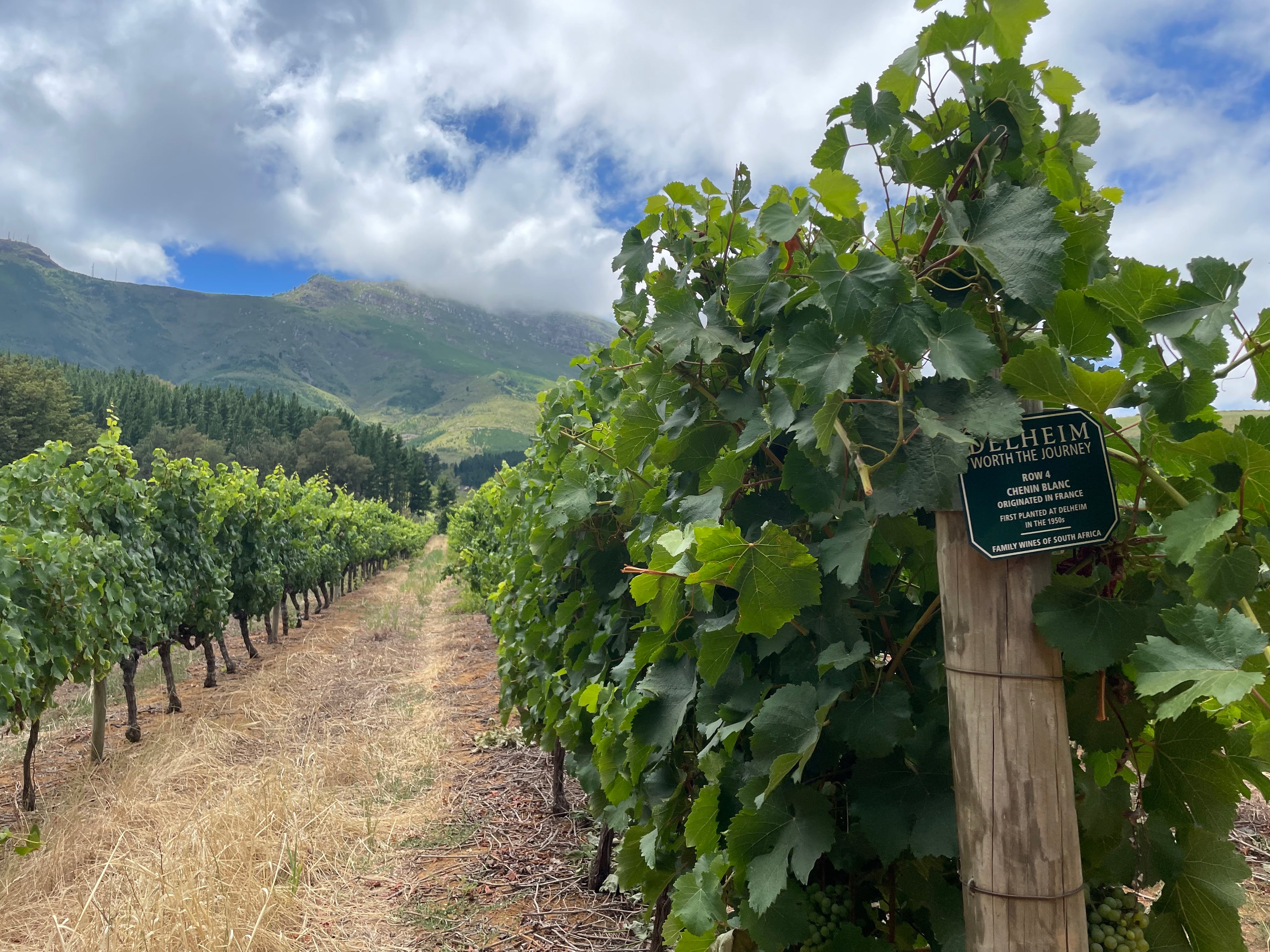
Straight to the tears?
Delheim
Characteristics
growing area
Simonsberg, Stellenbosch
philosophy
"The life of everyone on the estate is as interwoven as the soil and the vines are interconnected. The aim has always been to promote a strong culture of sustainable development on the estate and in the community that grows and works together here - in the spirit of a family-run company .
In everything we do, we strive for longevity and sustainability ."
Cultivation Info
Delheim:
Size: 36 ha
Floors: decomposed granite
Altitude: 320m - 480m above sea level NN
Annual precipitation: 900mm
Planted exclusively with white grape varieties, mainly Chenin Blanc, Chardonnay, Sauvignon Blanc and White Riesling. With the exception of a vineyard (3 ha) with high density Chardonnay, Delheim is not irrigated. Divided by an old river bed, two different exposures are created, namely a warmer north-west slope (full-bodied, fruity) and a cooler south-west slope (slender, elegant).
Vera Cruz:
Size: 85 ha
Floors: decomposed granite, heavily weathered
Altitude: 190m - 350m above sea level NN
Annual precipitation: 650mm
Red grape varieties (74 ha) are mainly cultivated here: Cabernet Sauvignon, Merlot, Pinotage and Shiraz, while the white varieties (11 ha) are Chardonnay, Chenin Blanc and Sauvignon Blanc. About 50% of the vineyards are equipped with drip irrigation, the other half is cultivated without irrigation. Vera Cruz is also on a cooler south-west slope and, along with the other characteristics, is ideal for growing quality red vines.
Winemakers & team
Cellar master: Roelof Lotriet
Winemaker: Nongcebo Langa
Directors: Nora Thiel & Victor Sperling
The team strives to nurture the rich legacy of the Sperling family and combine it with a fresh and vibrant approach to ensure sustainability in today's world.
From lemons to wine
The piece of land, first registered in 1699 and formerly used as a farm , got its name in 1938 from its German owner, Hans Otto Hoheisen. There is a beautiful, romantic story behind it, because Hans bought the farm for himself and his wife Deli so that he could retire comfortably in old age: DELHEIM = Deli's home. ♥
Actually, mainly citrus fruits should grow here, but it was far too windy for that. Friends gave Hans the idea to try wine... and times really weren't easy! Due to a lack of resources due to the war, Hans Otto even used beer bottles to fill his wines!
While Hans Otto himself thought his wine with the initials HOH stood for
" Hell Of a Hangover! ", his first creations were nevertheless well received, at least in the circle of friends.
Then, in 1951, Hans Otto's nephew, Michael Sperling (but mainly called " Spatz "), came from Germany to the still young winery in 1951, quite penniless and without prospects, to lend a hand. With no prior knowledge of viticulture, his first white wine earned him the name " Spatzendreck ". According to the motto - Now more than ever! - Michael created a suitable label for his wine and... it became a bestseller !
Driven by ambition and following the principle of trial and error, Michael managed to make a name for himself over the next few years and won prestigious prizes in the wine world with his wines. But that's not all: Michael "Spatz" Sperling founded the first Stellenbosch Wine Route in 1971 (together with the wine estates Simonsig and Spier), which today includes over 200 wineries!
Impressions of the winery
-

Iconic logo of the "Spatzendreck" - today the popular dessert wine
-

Fancy some wine? This way!
-

Cellar master Roelof Lotriet and winemaker Nongcebo Langa
Wines from Delheim Wines
-
 Sold out
Sold outSauvignon Blanc 2024
Vendor:DelheimRegular price €7,90 EURRegular priceUnit price €10,53 / per l -
 Sold out
Sold outPinotage Rose 2024
Vendor:DelheimRegular price €7,90 EURRegular priceUnit price / per -
 Sold out
Sold outShiraz Cabernet Sauvignon 2020
Vendor:DelheimRegular price €7,90 EURRegular priceUnit price €10,53 / per l -
 Sold out
Sold outChenin Blanc Wild Ferment 2020/22
Vendor:DelheimRegular price €11,90 EURRegular priceUnit price / per








